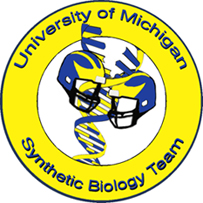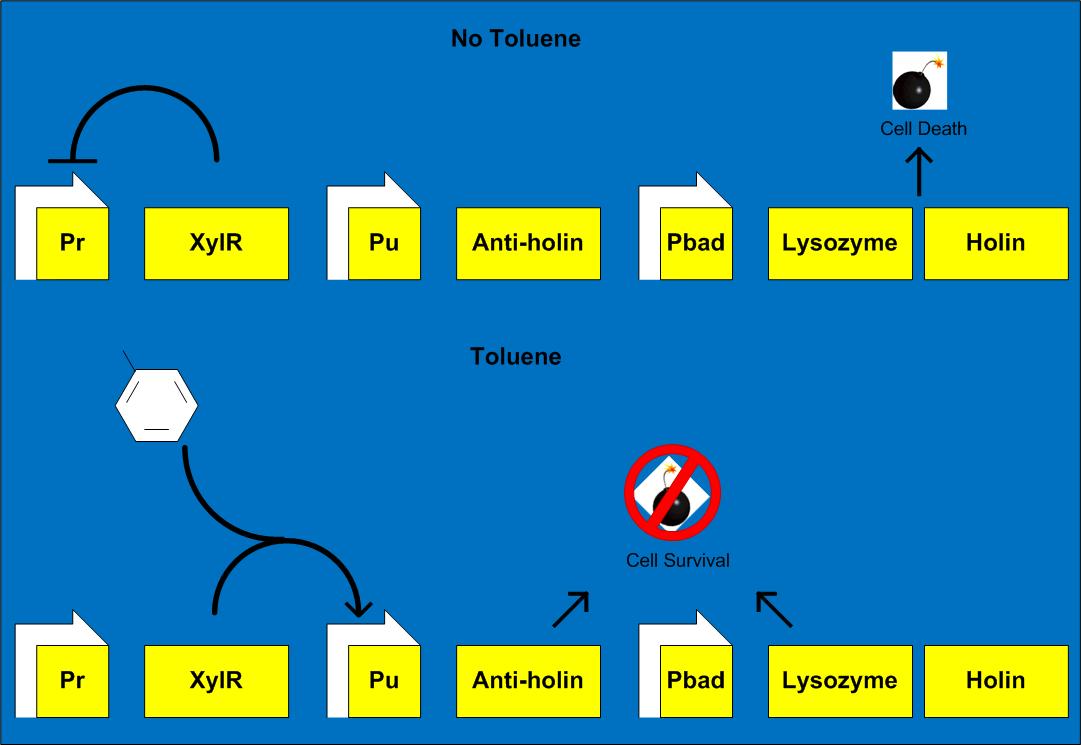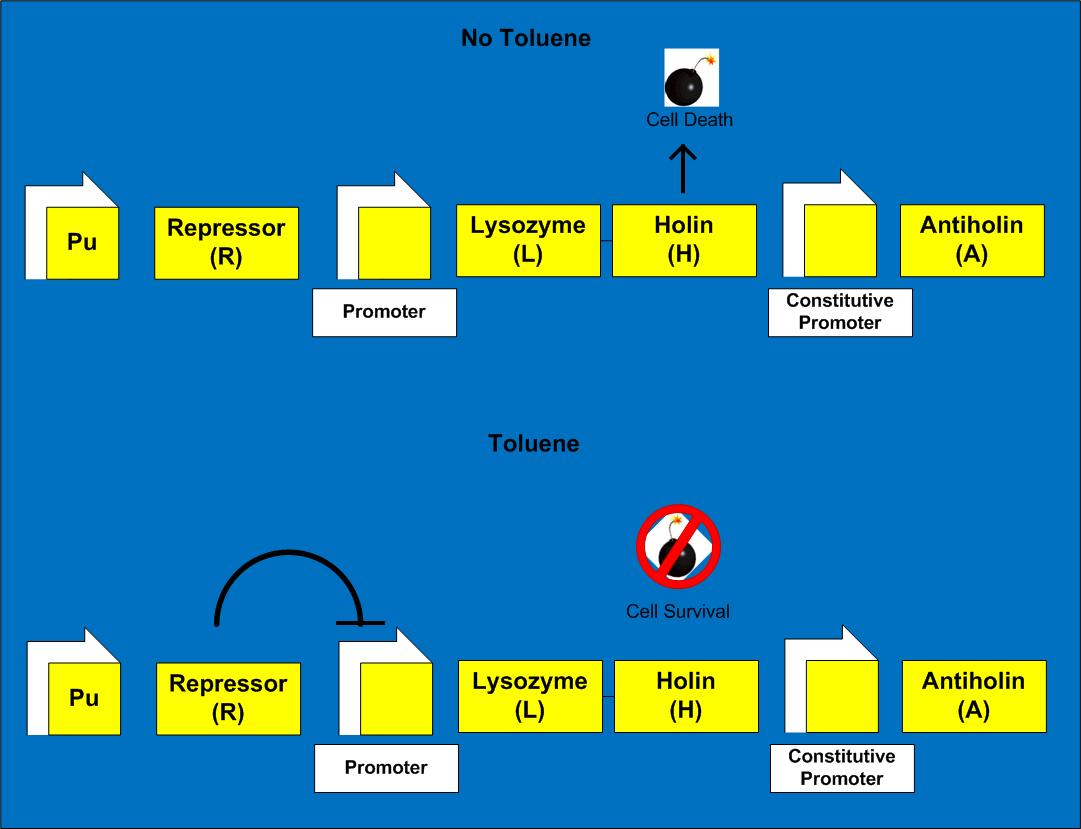Team:Michigan/Project
From 2009.igem.org
(Difference between revisions)
| Line 20: | Line 20: | ||
<div align=justify> | <div align=justify> | ||
| - | The goal of this project is to work with the toluene degrading abilities that already exist in P. putida mt-2 (ATCC 33015) on the pWW0-TOL plasmid. The pathway on this plasmid is comprised of the upper pathway where toluene is metabolized into catechol and the lower, meta-pathway where catechol is converted into acetaldehyde and pyruvate. The regulation of toluene degradation on the pWW0 plasmid is presented below. | + | The goal of this project is to work with the toluene degrading abilities that already exist in ''P. putida'' mt-2 (ATCC 33015) on the pWW0-TOL plasmid. The pathway on this plasmid is comprised of the upper pathway where toluene is metabolized into catechol and the lower, meta-pathway where catechol is converted into acetaldehyde and pyruvate. The regulation of toluene degradation on the pWW0 plasmid is presented below. |
[[Image:Toluene_degradation_topology.jpg|950px]] | [[Image:Toluene_degradation_topology.jpg|950px]] | ||
| Line 28: | Line 28: | ||
<font color=navy> | <font color=navy> | ||
| - | The Pr (regulator) promoter is a constitutive promoter in P. putida mt-2 and expresses the XylR regulator protein. When there is no toluene in the system, the XylR protein acts as a repressor for Pr to prevent leaky expression. When toluene is present, the toluene binds with the XylR regulator protein to create a complex that activates the Pu (upper pathway) promoter and starts to degrade toluene. The upper pathway enzymes XylA, XylB and XylC degrade toluene into catechol. | + | The Pr (regulator) promoter is a constitutive promoter in ''P. putida'' mt-2 and expresses the XylR regulator protein. When there is no toluene in the system, the XylR protein acts as a repressor for Pr to prevent leaky expression. When toluene is present, the toluene binds with the XylR regulator protein to create a complex that activates the Pu (upper pathway) promoter and starts to degrade toluene. The upper pathway enzymes XylA, XylB and XylC degrade toluene into catechol. |
=<font color=royalblue size=3>Lower Pathway</font>= | =<font color=royalblue size=3>Lower Pathway</font>= | ||
| Line 38: | Line 38: | ||
<font color=navy> | <font color=navy> | ||
| - | Our project is aimed at characterizing the promoters in the pWW0 plasmid to sense when the toluene degrading process is finished, signaling the cell to commit suicide. The promoter we chose to sense the presence of toluene is the Pu promoter. In order to characterize this promoter we created Bba_K270003, a device that has the Pu promoter expressing GFP. To have this device function in strains other than P. putida mt-2 that already contains the XylR regulating protein, the part Bba_K270001 was created from the Pr XylR portion of the pWW0 plasmid to regulate the Pu promoter. By combining the functions of these two parts, the intensity of GFP can be used to measure the promoter activity when induced with non-lethal level of toluene. | + | Our project is aimed at characterizing the promoters in the pWW0 plasmid to sense when the toluene degrading process is finished, signaling the cell to commit suicide. The promoter we chose to sense the presence of toluene is the Pu promoter. In order to characterize this promoter we created Bba_K270003, a device that has the Pu promoter expressing GFP. To have this device function in strains other than ''P. putida'' mt-2 that already contains the XylR regulating protein, the part Bba_K270001 was created from the Pr XylR portion of the pWW0 plasmid to regulate the Pu promoter. By combining the functions of these two parts, the intensity of GFP can be used to measure the promoter activity when induced with non-lethal level of toluene. |
Currently, we have made the Pu GFP and Pr XylR parts. In the future, we plan on creating one device composed of these two parts and testing the Promoter activity in both ''E. coli'' and ''P. putida''. | Currently, we have made the Pu GFP and Pr XylR parts. In the future, we plan on creating one device composed of these two parts and testing the Promoter activity in both ''E. coli'' and ''P. putida''. | ||
Revision as of 00:18, 21 October 2009
| ||||||||||||||||||||||
|---|---|---|---|---|---|---|---|---|---|---|---|---|---|---|---|---|---|---|---|---|---|---|
 "
"



